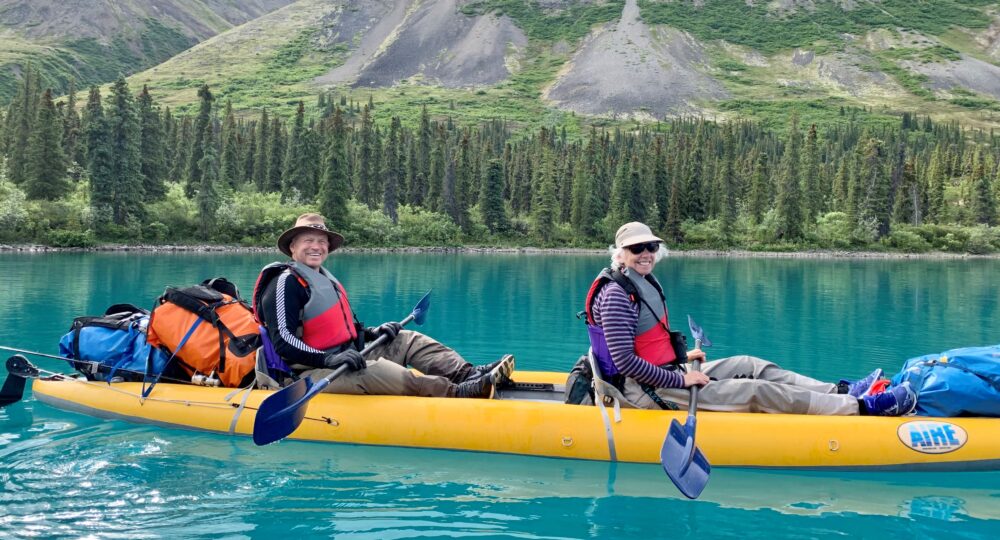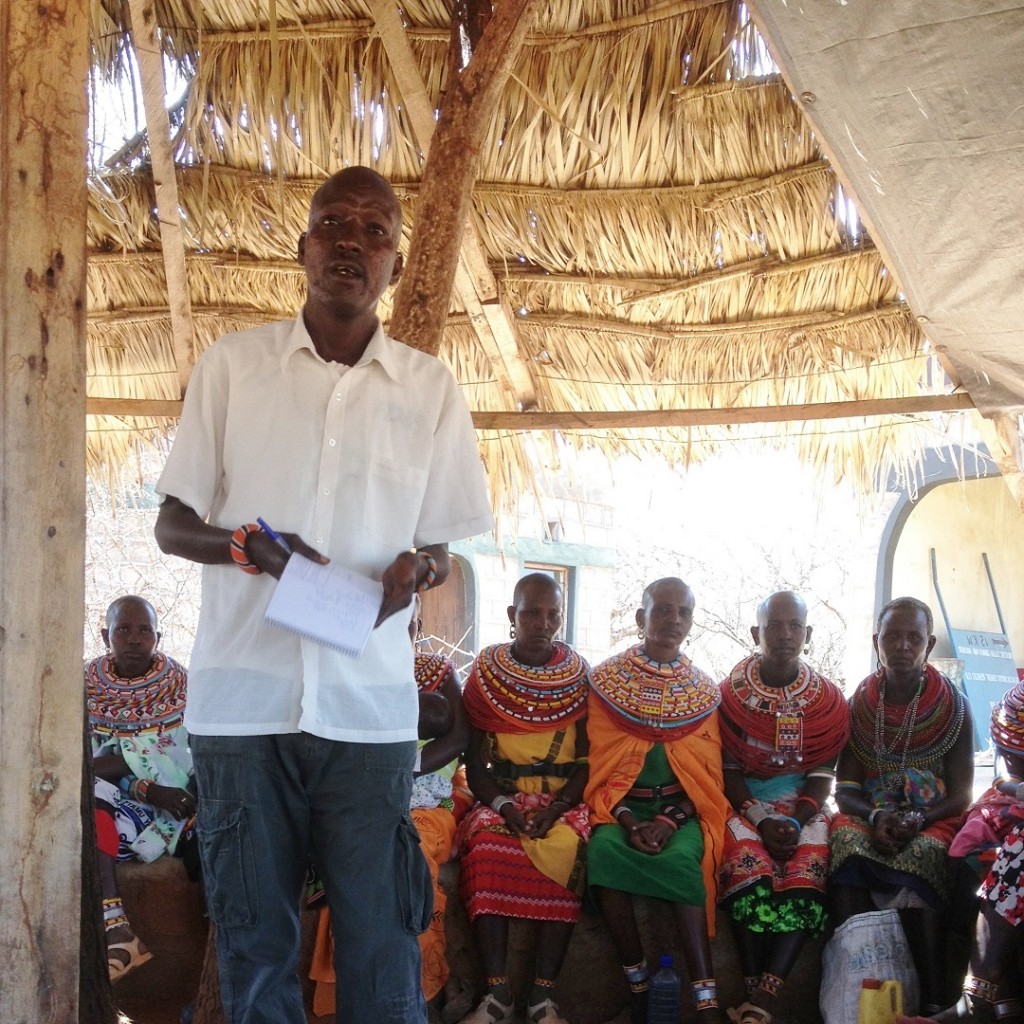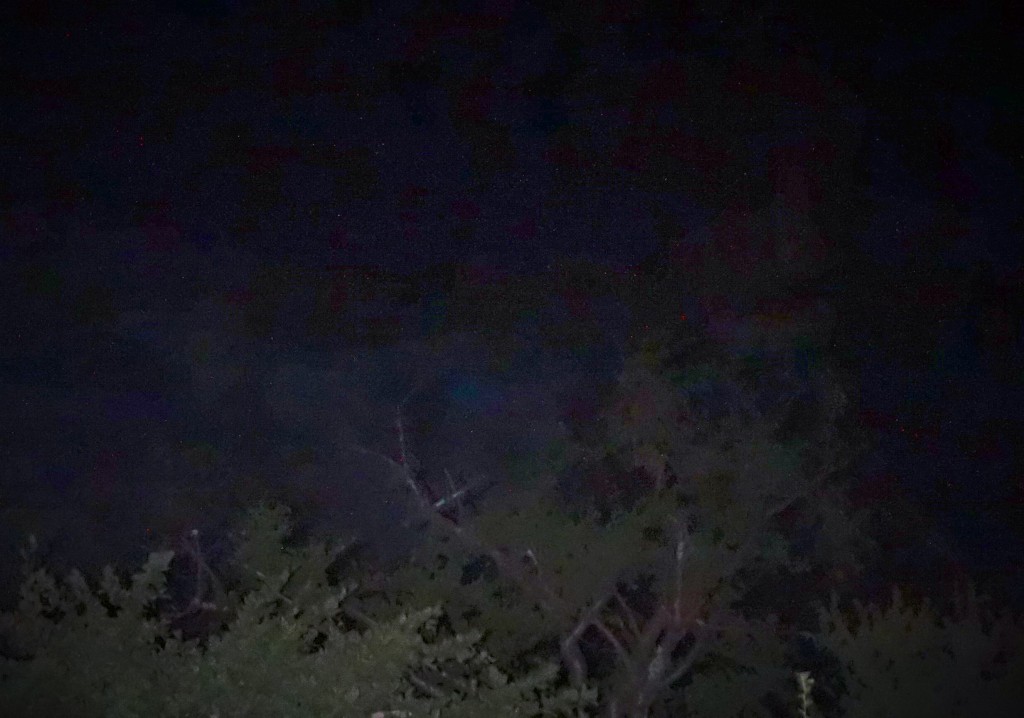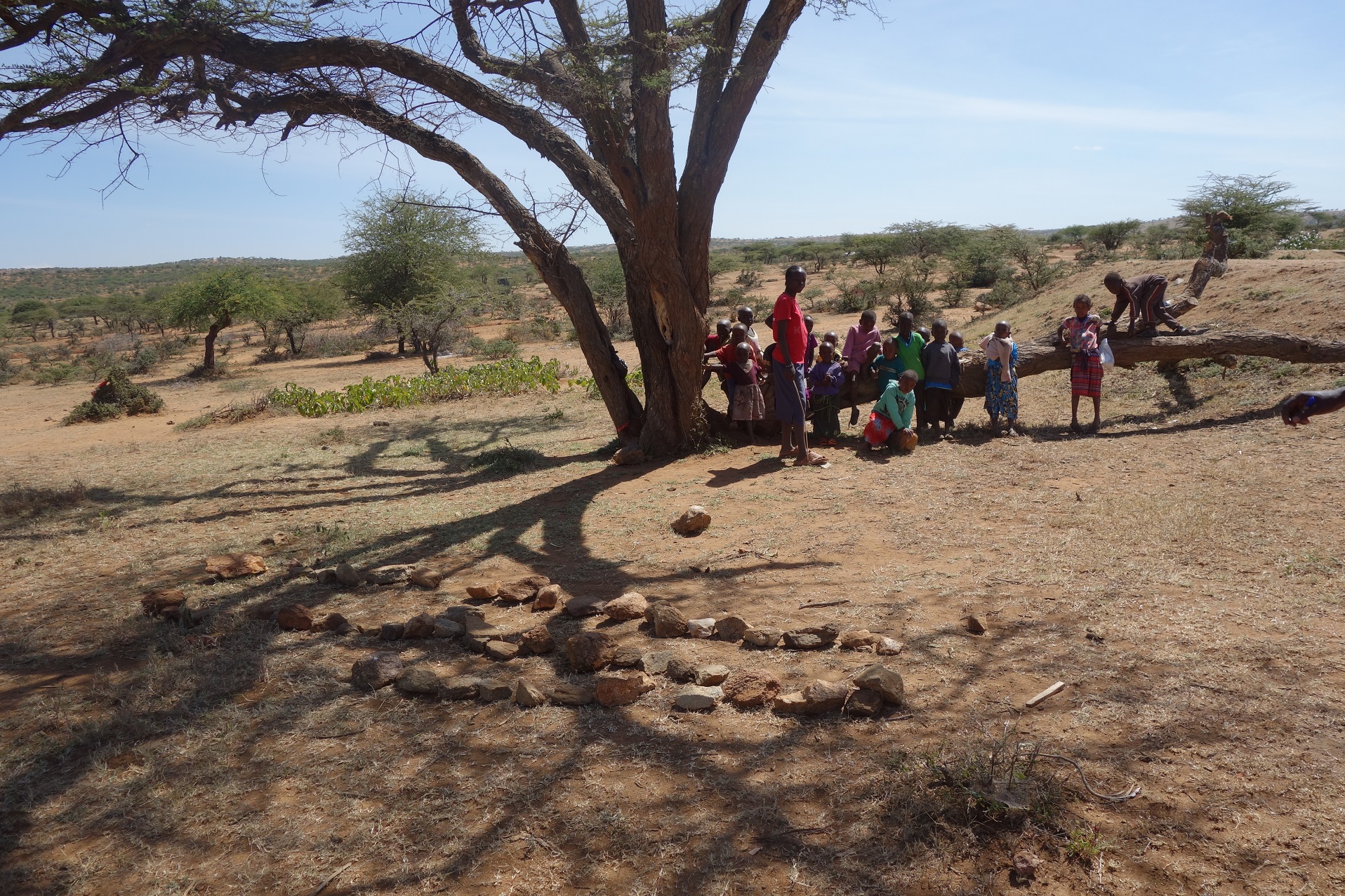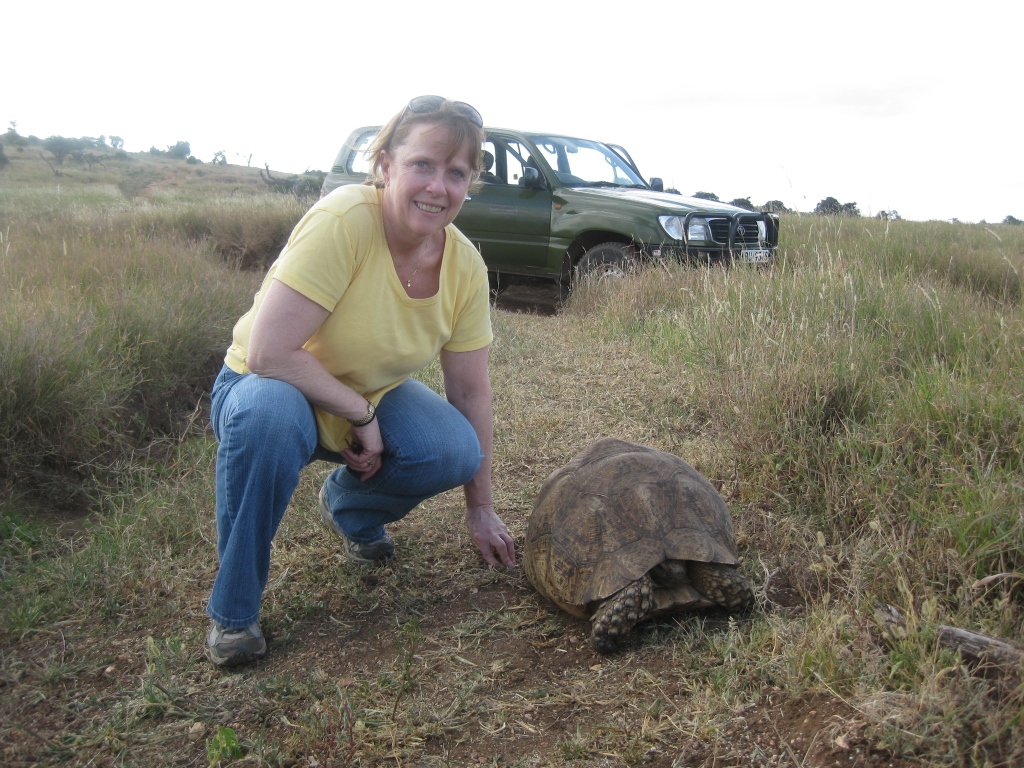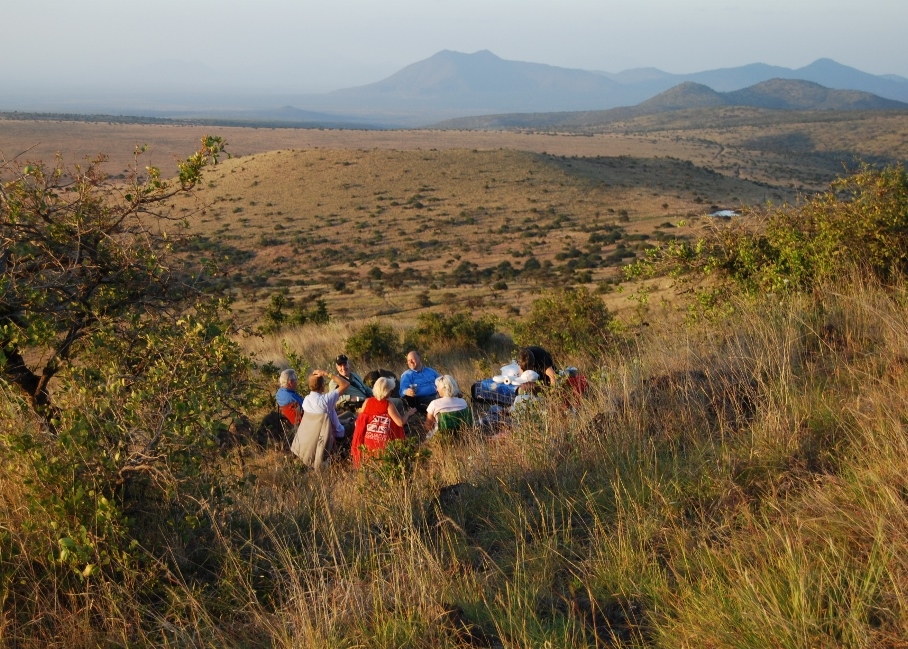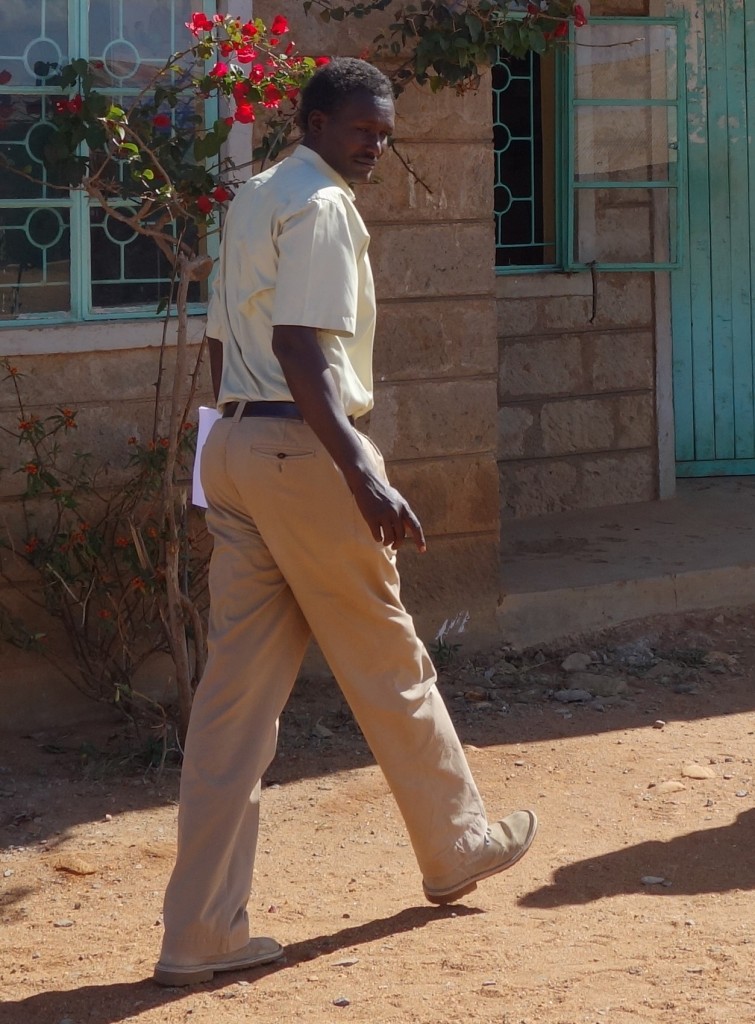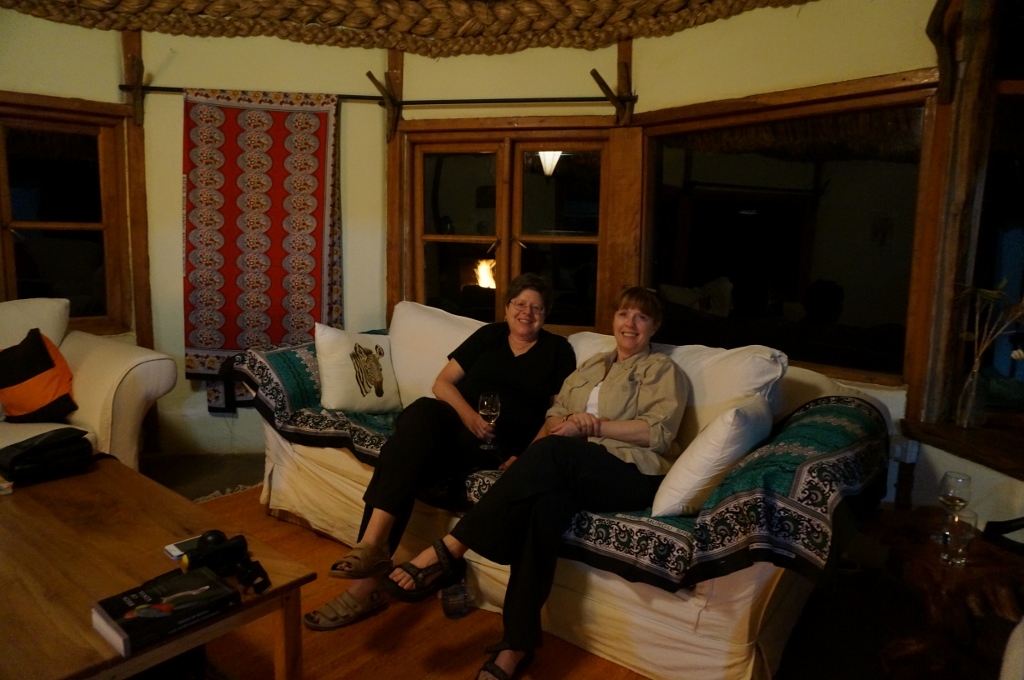Last week I visited all the schools in Biliqo Bulesa, a conservancy northeast of Lewa, large in area and small in population. My driver, cook and I packed up our camping gear, food for a week, plenty of water and headed out. One hour of tarmac road and four hours on dirt found us in Merti. We spent the first night in a small hotel. I had the expensive room, Ksh 600 ($7.20) with indoor plumbing. Simon, the driver, and Faith the cook stayed in the Ksh 300 rooms. They had the better deal. Their board walls with gaping holes, paneless window openings and thatch roof let in a cool breeze while I sweltered in my block construction with sheet metal roof which absorbed and retained the daytime desert heat.
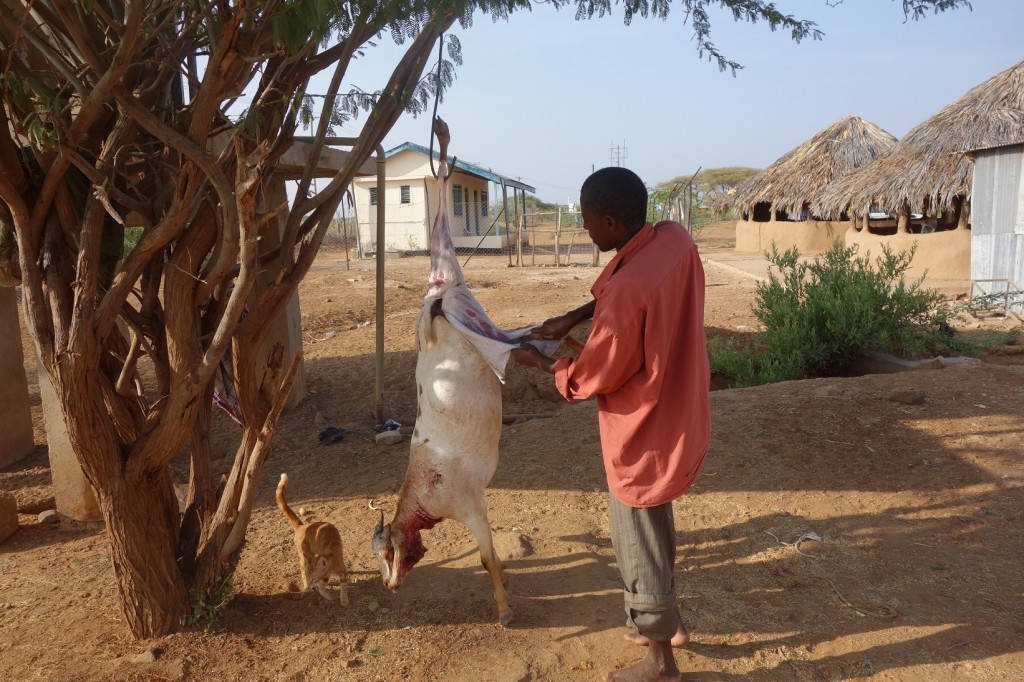
My room was in the white building in the background. Simon and Faith stayed in rooms to the right of the shaded terraces. Faith cooked us a dinner of canned corned beef and shredded cabbage. We didn’t get to share in the goat the man was skinning.
Continue reading
